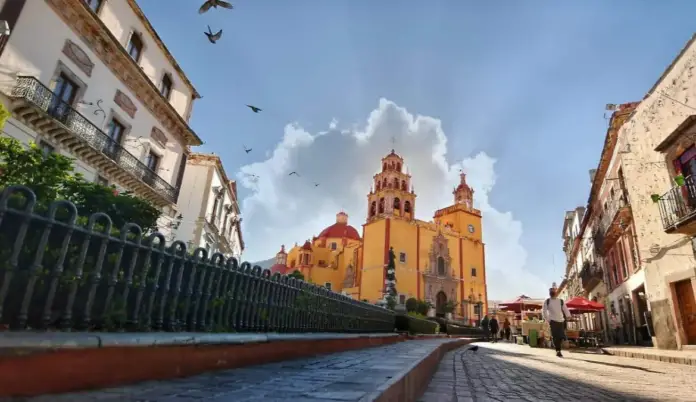To boost tourism and its infrastructure in the state of Guanajuato, 15 projects are planned for implementation in three emblematic municipalities: Guanajuato City, San Miguel de Allende, and Dolores Hidalgo.
Guanajuato Municipal Civil Protection warned of the risk of collapse in at least four areas of the Historic Center due to the deterioration of old, unmaintained buildings. The situation is exacerbated by the rainy season and restrictions on interventions due to the protected heritage of the INAH (National Institute of Health).
During the first Comprehensive Forum on Tourism and Magical Heritage of Guanajuato, organized by the State Congress, the needs of the sector, priority areas for the sector, and strategic projects to be carried out were presented.
Laura Torres Septién Torres explained that six of these projects will be carried out in the capital, another six in San Miguel de Allende, and three more in Dolores Hidalgo. He added that investment vision is needed, and that authorities must create the conditions to carry out projects.
Promoting new tourist areas for the capital
Among the proposals for the capital is revitalizing the Rayas Mellado cluster, that is, intervening in both the area’s mine and the plaza to increase tourism and economic activity. A mining circuit is also being considered to take advantage of the city’s history.
Another project is to rehabilitate the capital’s viewpoints. Furthermore, the creation of the first linear park on the Guanajuato River, in the Marfil area, is proposed to generate a natural landscape; something similar is planned for the Pastita area.
A joint project is the Camino Real de Tierra Adentro, which seeks to connect Guanajuato with San Miguel and Dolores from a tourism perspective.
Also planned for the capital is the restoration of the Paseo de la Presa area, which will seek to convert it into a tourist destination. This will require relocating the state government offices currently located in that area.
We don’t want to push the Guanajuato city government out of business. What we want is for unnecessary offices to be able to occupy other spaces within the city and leave Paseo de la Olla as a more touristy spot.
Laura Torres Septién Torres.
In her presentation titled “Guanajuato’s Magical Heritage:
Strategies for the Sustainable Development of Heritage Cities and Magical Towns,” Laura Torres highlighted the importance of boosting tourism with a comprehensive medium- and long-term project.
“We must plan. We can’t just not plan. We need this planning to have a solid foundation for how we can grow and not imagine what we’ll do in a year or a six-year term, but rather what we’ll do in 10, 20, or 30 years. How will our tourism be then?”
Connectivity and Tourism for San Miguel de Allende
Laura Torres pointed out that it is essential to invest in infrastructure in San Miguel de Allende, which is why three highway bypasses are being considered to improve mobility, as the city is congested during peak tourist seasons.
One of these is the Libertad Boulevard, already under construction, but the Celaya–Querétaro and Querétaro–Dolores Hidalgo bypasses are also needed.
Additionally, a linear park along the Cachinches Creek is being planned, as a commitment to ecotourism. Two tourist corridors are also being proposed: one in La Cieneguita (divided in two) and another on Zeferino–Los Rodríguez Boulevard, to ease congestion in the historic center.
Dolores Hidalgo and its Culture
For the municipality of Dolores Hidalgo, the goal is to restore El Llanito to facilitate access to rural towns and turn it into a tourist destination.
The second project is the rehabilitation of the access via José Alfredo Jiménez Avenue.
Dolores Hidalgo’s handicraft offering is there. We must transform and improve this area so that the experience for tourists when shopping for handicrafts is better.
Laura Torres Septién Torres.
The Secretary of Tourism, María Guadalupe Robles, announced that the state government will promote ecotourism as a key strategy to attract new markets and generate development in all regions of the state, including areas with less tourist exposure.
The third project consists of rehabilitating access to the city, improving arrival times, and maintaining the urban landscape.

Source: oem




